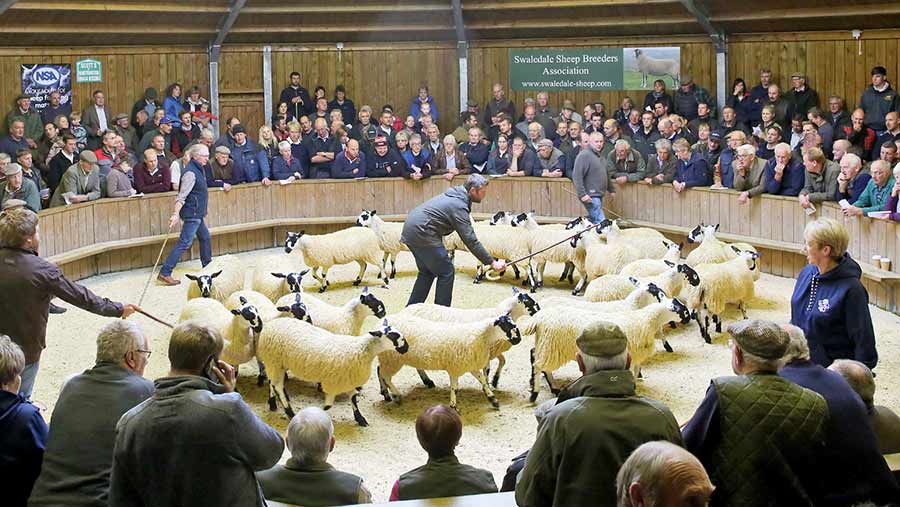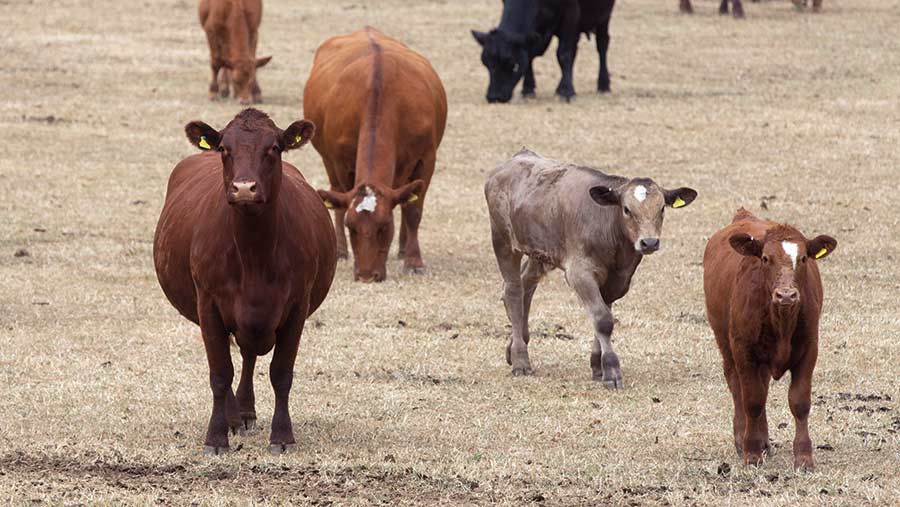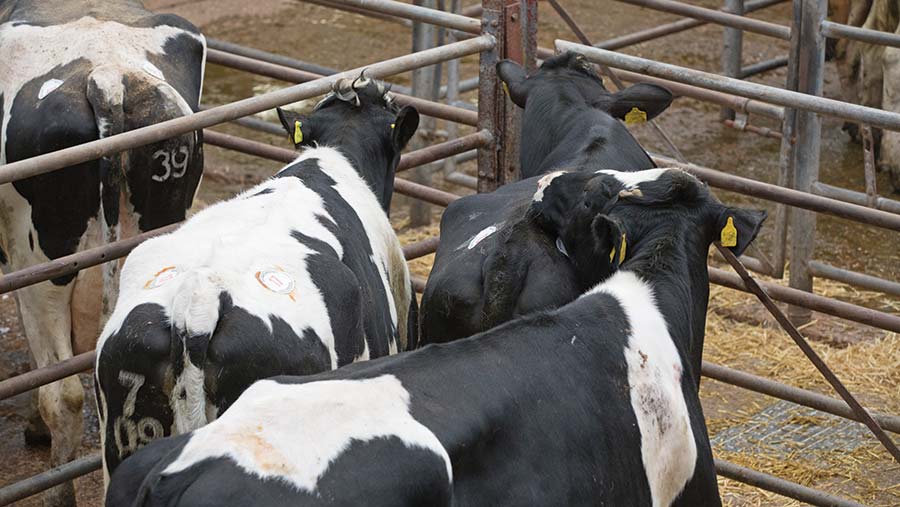Livestock markets 2018: A year of extremes
No year in recent memory comes close to 2018 in terms of the weather’s effect on British livestock production.
A long winter depleted hay and silage stocks, which was then compounded by having to feed rations through a summer drought of 1976 proportions.
By the summer’s end, forage banks were in full swing, with NFU Scotland’s #HowDoYouPlan campaign striving to avoid chronic feed and bedding shortages.
See also: How to manage a farm succession handover
This produced a roller-coaster ride for livestock prices. We spoke to AHDB analysts Rebecca Oborne and Katherine Jack and SAC livestock business consultant Robert Logan to find out what effect this had on prices.
Sheep

© Tony Iley
Tight global supplies and surging Chinese demand left spring British lamb looking attractive in comparison with Australian and New Zealand product in the first half of the year.
Average liveweight SQQs hit jaw-dropping levels of 300p/kg for five weeks out of six in April and May.
A cold spring and a drought meant upland lambs were marketed later and at the same time as the hill lambs, leaving SQQs tracking about 165-174p/kg since October.
Initially, depressed growth rates and underfinished lambs led to marts clamoring to find 42-44kg lambs with sufficient fat cover. Tough conditions saw marts report summer supplies to be three to four weeks behind normal.
Latterly, heavier lambs have proliferated during a kind autumn, with the 38-42kg bracket often working out at more money per kilogramme.
Liveweight throughputs remained back on the year since April, barring two weeks – one in the grip of the drought. Lamb production followed suit, down 7,400t carcass weight equivalent (cwe) for the period January to August.
Shipments abroad also fell, despite more heading to Ireland and Germany. Overall exports dropped 11% on year between January and September (-56,800t), largely driven by smaller orders from France and Italy.
Breeding sheep sales saw smaller yardings make less money on the whole, although trade strengthened into the autumn as grass returned.
Thame Sheep Fair (-£12.50) and Hawes Mule sales (-£20) were among many to see averages back, particularly for small lambs.
Beef

© Tim Scrivener
Marts saw beef prices peak in May, come under pressure during the drought and never fully recover as grassland farms nervously offloaded cattle before winter.
A world cup, excellent barbecue weather and manufacturing beef demand from the continent devalued round cuts and prime beef prices, but this improved, with bulls stepping up 6p/kg to 181.28/kg in November.
Concerns over forage availability and strong cow beef demand drove a 1.9% decrease in the Great British beef herd, the Defra June survey showed.
Heifer slaughterings were much higher too, with weekly processor throughputs 10-20% higher on the year since September and up on the year since April. This has meant 2019 average carcass weights were down slightly.
Demand for cow beef has been a driver in exports lifting 7% from January to September.
Prime liveweight heifer prices troughed in mid-October to 203.83p/kg, but saw a welcome increase to 208-210p/kg through November, bolstered by Christmas demand.
Dairy

© Tim Scrivener
Dairy cattle started the year well and got stronger, with centres seeing many £2,000-plus calls, which have since been few and far between.
Cow prices fell from a January high of £1,200 and heifers peaked slightly later at £1,400 in March and May.
Commercial prices first came under pressure amid the parched ground and feed worries of July and August. Auctioneers reported a drop of up to £200-£300 a head before prices slowly recovered in September.
TB-enforced culling has played a part in supporting demand, with a weaker pound also making imported heifers look relatively expensive once again.
In the back end of 2018, dispersals and weekly sales showed an eagerness from buyers to secure quality and fresh milk, with cows seeing the biggest uplift in demand since the summer drought.
This saw September and October’s averages for fresh commercial heifers average £1,288 and £1,351, respectively, while cows were a touch above £1,000, said market sources.
Globally, Australia has also seen severe drought hit feed stocks. However, this has been negated by strong New Zealand production.
Cuts have been announced by Fonterra, while closer to home, several UK processors have altered sentiment in the dairy rings slightly with 1p/litre cuts from 1 December.
